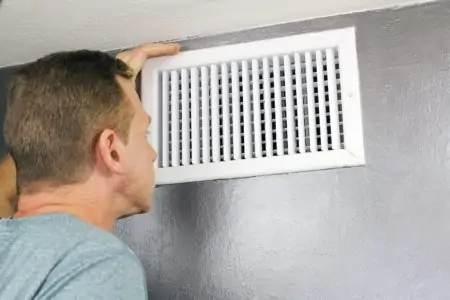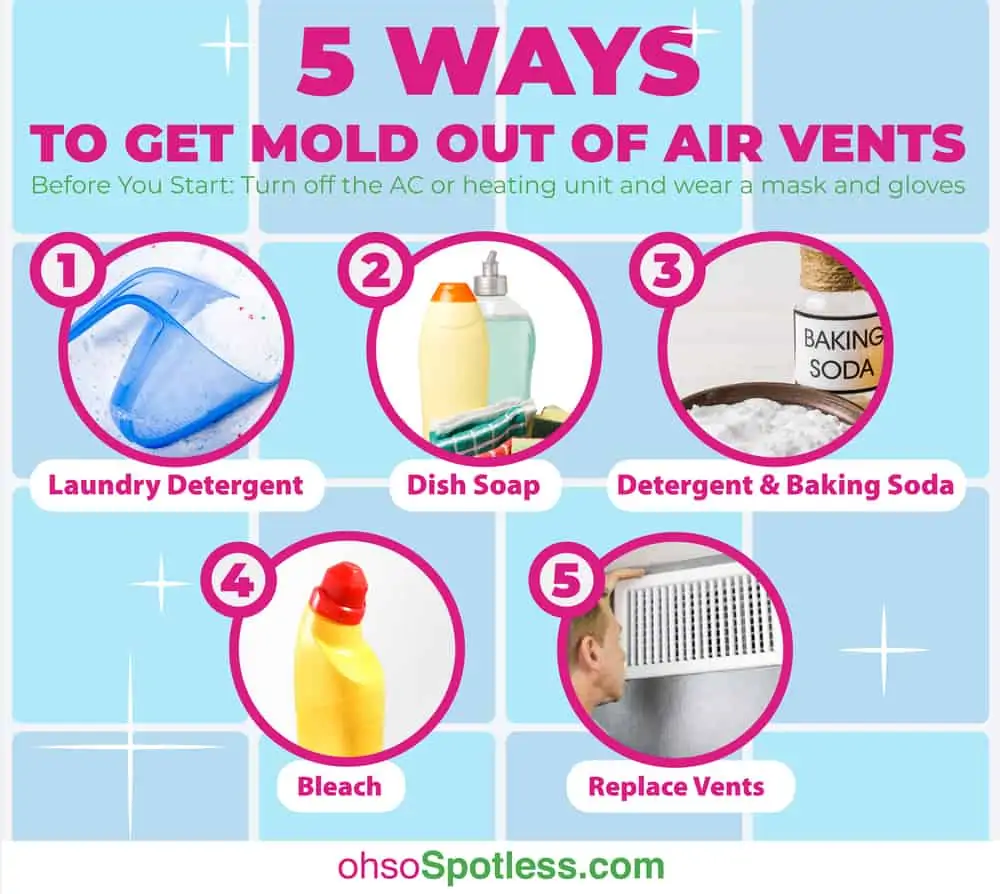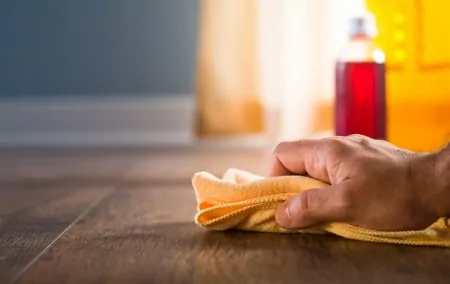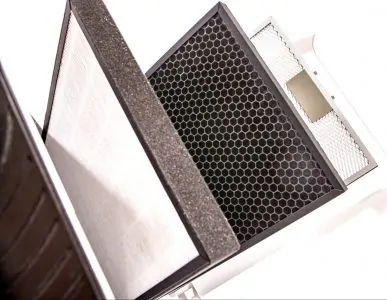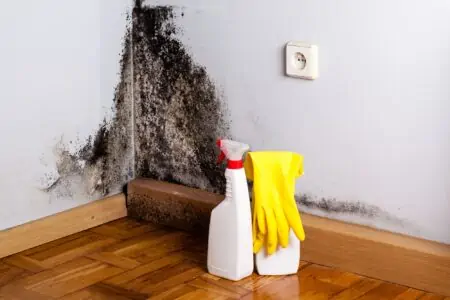If you’ve noticed mold on your air vents, let’s get it dealt with right away. We’ll teach you how to get it away, how to prevent it but also talk through how to spot it.
We’ll also discuss whether it’s dangerous, why it’s there and what it looks like. By the end of this, you’ll be a mold on air vents expert, armed with the right knowledge to spot it, eliminate it and prevent it.
Key Takeaways
- Mold on air vents can be dangerous and lead to various health problems.
- Remove mold from air vents using methods like Dawn dish soap, laundry detergent, or professional cleaning services.
- Mold on air vents is often caused by moisture, warmth, and poor ventilation.
- Prevent mold growth by using mold inhibitors, regularly replacing HVAC filters, and maintaining proper humidity levels.
Is Mold on Air Vents Dangerous?
If you spot mold on your air vents, it’s not something you should ignore. This can be really dangerous, especially since the air will distribute the mold around your home. You’ll start to breathe it in which can lead to a range of health problems, including (1):
- Respiratory effects.
- Headaches.
- Coughing.
- Wheezing.
- Asthma-like symptoms.
- Shortness of breath.
- Hypersensitivity pneumonitis.
- Infections.
- Sinusitis.
- Hay fever.
- Pulmonary hemorrhage.
- Fatigue.
- Eye irritation.
These symptoms can occur in healthy people, as well as people who already have pre-existing conditions. If you experience a sudden onset of these symptoms, and notice mold in your air vents, it’s time to clean them right away. You may also want to visit the doctor if your symptoms persist.
What Does Mold in Air Ducts Look Like?
Mold can show up in air ducts in a few different ways. The only official way to actually verify if it’s mold is to send a sample to a lab or with a viable mold test kit. But there are some pretty obvious signs if you know what to look for.
Odors
One of the first things you may notice are bad odors. Moldy smell is usually a musty, damp, wet, stale or rotten odor, and more prominent when your heating or air conditioning is turned on.
Warning
Dark Dots
Mold can also be visible. This takes a few different forms.
One form looks like black spots. These may be large, covering a mass area, or they could look like small black polka dots. This could be black mold, otherwise known as Stachybotrys chartarum, and it’s very dangerous (2). If you notice this kind of mold, it’s best to contact a professional mold remover.
Growths
Mold takes on a few different physical forms, and another common one is a white fuzzy growth. This is similar to what you see growing on out-of-date food.
Other Appearances
Odors, dark spots and growths aren’t the only way mold takes form. It can also appear as yellow, blue, green or pink (3). Sometimes it just looks like a discoloration or stain. It can also be a variety of textures including velvety, fuzzy, or rough.
Why Is There Mold on My Air Vents?
If you’ve noticed mold on your air vents, you might be asking yourself why is it there? There are a few different reasons for this.
Moisture
Mold loves to grow in moist environments, and unfortunately, air vents are pretty damp places (4).
Humidity is a big cause of mold, and since air vents are humid places, you can expect to find mold in your air vents. This can appear on air vents for central heating, air conditioning and appliances such as dryers, stoves, and refrigerators.
Warmth
Mold also thrives in warm environments. This is especially true where warm air comes in contact with cooler surfaces, such as the air vent itself (5). This causes condensation which can lead to mold growth.
Poor Ventilation
Although you may think your air vents would be the perfect place for ventilation, this isn’t always the case. If you have poor ventilation due to a blockage, dust, leaks or inadequate outdoor vents, then the air can’t circulate properly which can lead to mold growth.
Oversized AC Unit
Larger air conditioning units can cool smaller spaces too quickly, meaning they turn off before the air has dehumidified. This leads to excess moisture that gathers in the air vents and can’t be circulated properly.
If you have a new unit, and notice mold pretty soon after installation, it could be that your unit is too big.
Your AC Is Too Cold
Do you put your air conditioning on too low of a temperature? The temperature difference between the air conditioning and the room can cause condensation in the room and the air vents. If this doesn’t dry out properly, it will lead to mold.
How Do You Get Mold Out of Air Vents?
The best way to get rid of mold on air vents is by hiring a professional. They will adhere to high safety standards, ensuring there are no hazards for them, your family, or your home. Plus, they use the correct cleaners that are safe for your vents, but most effective on mold.
However, if this isn’t an option for you, we have some methods that may work in the meantime.
Before You Start
Laundry Detergent
Laundry detergent is a good way to attempt to rid the mold from your air vents.
- Turn off your AC or heating.
- Unscrew the vent grill and place it in a large basin with a few drops of laundry detergent. Make sure it’s fully submerged.
- While this is soaking, use a HEPA vacuum to hoover out any dust or debris in the air vents.
- After 15 minutes, empty the basin and rinse out the air vent.
- Spray and wipe down the inside of your air vents with soapy water.
- Now use a disinfectant to spray the inside of your air vents, the vent grill and the areas surrounding the air vents. This will help to kill mold and bacteria. You may need to use a mop to get deep into the air vents.
- Dry thoroughly.
- Once the area is fully dry, you can reattach the vent grill.
- Discard everything that came into contact with the mold, including rags, cloths and gloves.
Dawn Dish Soap
Dawn dish soap, or another heavy-duty dish soap, may work to clean mold from your air vents.
- Turn off your AC or heating.
- Unscrew and remove the air vent.
- Place it in a basin of warm soapy water.
- While this is soaking, use a HEPA vacuum to hoover the inside of the air vents.
- Use a scrubbing brush to thoroughly scrub the air vents clean.
- Allow the air vent to dry thoroughly.
- This is optional, but you may want to repaint the air vent to make it look better.
- Attach the air vent again.
Detergent and Baking Soda
Similar to our laundry detergent method, this is a little more heavy-duty because of the added baking soda. All you need is one tablespoon of laundry or dishwasher detergent, half a tablespoon of baking soda and one cup of water. Increase these ratios as needed.
- Turn off the AC or heating.
- Mix the solution in a large basin. Increase the ratios depending on how large your basin and air vents are.
- Unscrew the air vents and submerge it into the cleaning solution.
- Let it sit for 15 minutes.
- Use a HEPA vacuum to clean out the inside of your air vents.
- Use the same baking soda and detergent solution to clean out the inside of the air vents. You may need a long-handled mop to get deep into the vents.
- After 15 minutes, use a scrubbing brush to scrub off the mold, mildew or dirt on your air vents.
- Dry thoroughly.
- Use a dry cloth to dry the inside of your air vents, too.
- Once everything is dry, reattach the air vent.
Bleach
If you have a non-porous surface, you can also use bleach to clean your air vents. Just make sure to follow packaging instructions and wear protective equipment.
- Mix together one part bleach with 16 parts water. This may change depending on the packaging instructions. You’ll want to keep a little of the solution aside for step six.
- Turn off your air conditioning or heating.
- Vacuum the air vents with a HEPA vacuum.
- Dip a rag into your bleach solution and scrub the air vents.
- Unscrew the air vents and dip it into the bleach solution.
- While this is soaking, use your reserved bleach solution to clean the inside of the air vents. Use a clean rag, dampen it with the solution, and clean the inside.
- Let this dry thoroughly.
- After about 15 minutes of your air vent soaking, use a scrubbing brush or rag to scrub the vent completely clean.
- Let the air vent dry thoroughly before reattaching.
Replace the Vents
These laborious cleaning methods may only keep your air vents clean for a short period of time. So, instead of going through them, you may want to just replace the vents.
Of course, you’ll still need to clean the inside of the vents and the surrounding area. But it may be a good idea, and possibly the safest method, to unscrew your air vent grill and replace it with a new one.
Will Lysol Kill Mold?
Lysol does have disinfecting products, including their mold and mildew remover spray. It eliminates mold and mildew stains, bleaches surfaces and kills 99.9 percent of viruses and bacteria.
However, this product is intended for bathroom surfaces, so use on air vents at your own risk. The manufacturer does state that prolonged contact with surfaces made from metal, old porcelain or plastic laminate can lead to discoloration.
You can try other Lysol products, such as a disinfectant spray. But these are intended to prevent mold and mildew, rather than kill it. It is better for odor, bacteria and viruses than anything else.
Does Air Duct Cleaning Remove Mold?
What about hiring a professional air duct cleaning service? Yes. This can remove mold, so long as you hire a legitimate company with the right experience and equipment. Overall, this is the most effective way to remove mold from your air vents, leading to a more hygienic and safer home life.
How to Prevent Mold on Air Vents
Once your air ducts are nice and clean, how can you prevent mold in the future?
- Mold growth inhibitors: Look for an EPA registered mold growth inhibitor product to prevent mold regrowth in the air vents. Follow the manufacturer guidance on how to use the product properly.
- Replace filters: You should replace your HVAC filters regularly.
- Clean drip pans: Where the drip pans collect water, mold can grow quickly. You should clean your drip pans regularly to prevent this.
- Dehumidify: Keep moisture levels down in the house. You should invest in a good dehumidifier and keep it near places that are prone to mold growth.
- Regular inspections: You should hire a professional company to inspect your ventilation system regularly. This ensures there are no leaks, mold regrowth or other faults that could lead to mold and mildew. These companies can also maintain and clean the air vents to ensure they’re in tip top condition.
- Regular cleaning: Make sure you’re regularly cleaning your air vents and ducts before mold appears. You can use the above methods to keep them clean so that they aren’t the ideal environment for mold.
- Clear path: Don’t put objects or obstacles over your air vents. This limits good air circulation which can lead to mold growth.
- UV light or ionization air purifiers: These items kill mold, viruses and bacteria. Consider getting these installed within your HVAC system — such as the coils or fan units — to eliminate odors, mold and other nasties.
FAQs
Farewell, Mold
With these cleaning and prevention methods, you can bid farewell to the mold on your air vents. We stick by the fact that hiring professionals is the best and most effective way to remove mold. However, you can definitely give the other methods a try.
Just be sure to wear protective equipment, and only attempt it if the mold growth is small. If it’s seriously large mold growth, or you’re already experiencing negative side effects from the growth, you should leave the area and hire professionals.
That being said, make sure to stick to our eight preventative methods to ensure that mold never becomes a problem in your ventilation system again.
